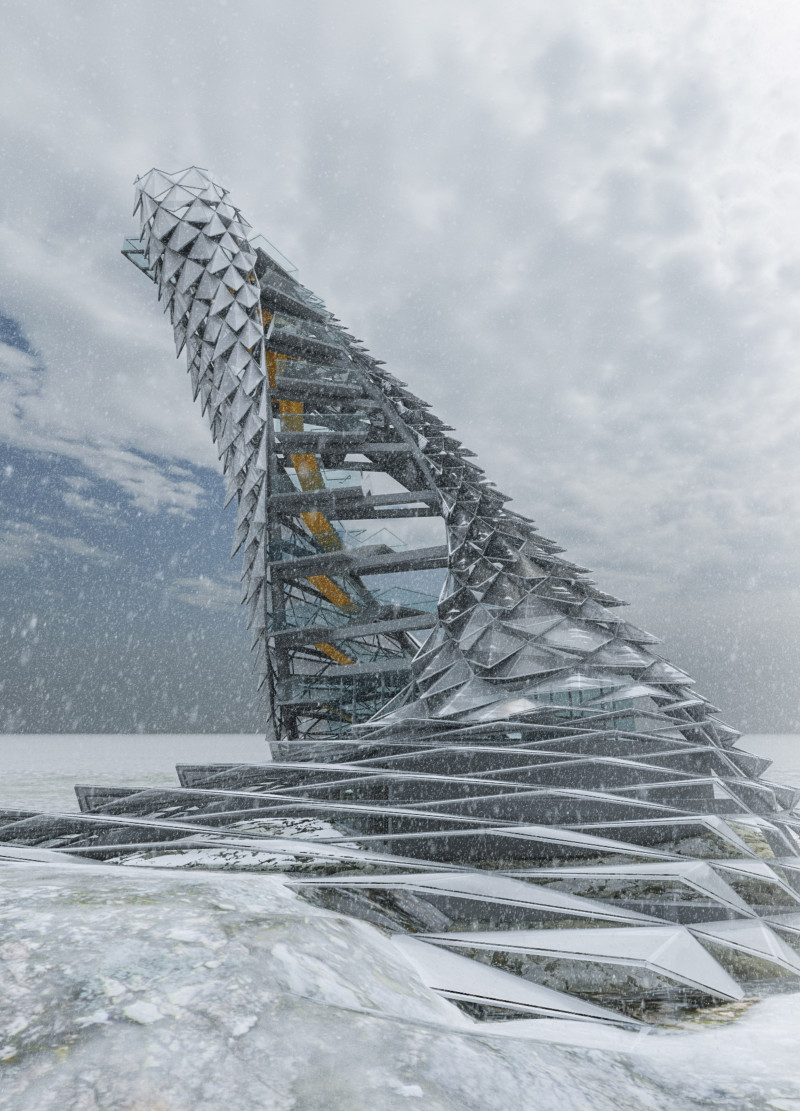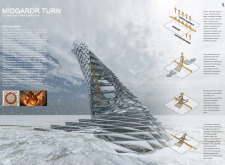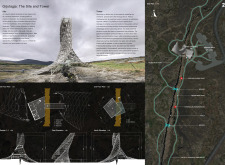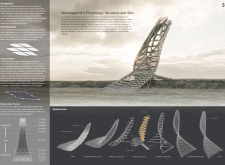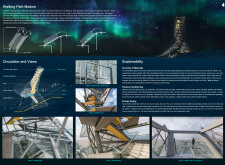5 key facts about this project
The Midgard Turn Tower is an architectural project situated in Grjótagjá, Iceland. This structure serves as both an observation point and a cultural symbol, reflecting the geological phenomena and Norse mythology intrinsic to the region. The design is rooted in the relationship between the North American and Eurasian tectonic plates, illustrating the dynamic interplay of nature that defines Iceland’s landscape.
The Midgard Turn Tower integrates a spiral form, which is inspired by Jörmungandr, the mythological world serpent. This distinctive shape not only contributes to the tower’s aesthetic appeal but also enhances its functionality, allowing for a variety of observation platforms that provide panoramic views of the surrounding terrain. The design emphasizes a strong connection to the geological forces at play, creating an immersive experience for visitors.
The architectural approach taken in this project emphasizes sustainability and energy efficiency. Several innovative features are incorporated, starting with the selection of materials. ETFE (Ethylene Tetrafluoroethylene) is used for its transparency and insulation properties, allowing natural light to penetrate while maintaining thermal comfort. Reinforced steel framework ensures structural integrity, which is critical given the environmental conditions in the area.
Photovoltaic panels are integrated into the design, effectively harnessing solar energy to support the tower’s energy needs. This self-sufficiency is enhanced by the use of thermal-glazed windows which provide passive heating, optimizing energy consumption. The careful selection of materials contributes to a reduced environmental impact, aligning with sustainable architecture practices.
The tower also features a circulation core that facilitates movement throughout the structure, enhancing user experience. This core not only serves a practical purpose but also reinforces the architectural integrity against harsh wind conditions. The interconnection of these design elements results in a cohesive structure that prioritizes both form and function.
The Midgard Turn Tower differentiates itself from other architectural projects through its integration of cultural narratives with ecological considerations. It exemplifies a thoughtful approach to site specificity, where the design directly reflects the geological and historical context of the area. Visitors can engage with the landscape in a meaningful way, promoting a deeper understanding of the natural forces that shape Iceland.
For further exploration of this project, interested readers are encouraged to review the architectural plans, architectural sections, and architectural designs available for a comprehensive understanding of the ideas and objectives behind the Midgard Turn Tower.


